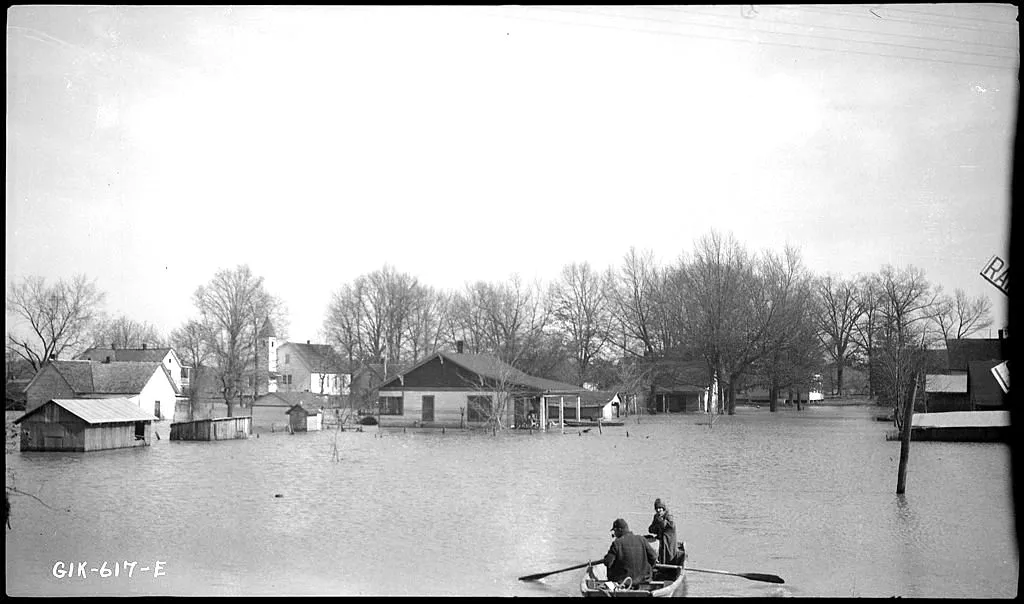So says Kentucky’s state song “My Old Kentucky Home.” That seems appropriate in the days following the horrific impacts of the series of killer tornadoes that struck western Kentucky. For me, as I await the appearance of my political history of western Kentucky, my focus turns to previous natural disasters that struck the region.
Certainly the New Madrid earthquake of 1811 ranks high on the list. The extreme southwest portion of western Kentucky, which at the time belonged to native American tribes, was in the center of one of the nation’s strongest earthquakes. It caused the Mississippi River to reverse course, and formed Reelfoot Lake on the Kentucky-Tennessee state line. Damage would have been great, but western Kentucky, part of the western frontier, was sparsely populated. Nevertheless, early settlers reacted to the intensity of the quake and its aftershocks which they believed foretold end times, as a dramatic uptick in their religious fervor known as the Great Revival spread eastward.
In terms of human and property damage, the Great Ohio River Flood of 1937 may have had the greatest impact on the history of western Kentucky. For several months that winter, rain and cold led to the flooding of the river for its entire length. Considered a 1,000 year flood, it hit western Kentucky especially hard as the swollen Ohio River held back floods from the Green, Cumberland, and Tennessee Rivers. Thousands of Paducahans were forced from their homes, fleeing south to nearby towns. The recovery was greatly aided by workers from the Civilian Conservation Corps and Works Progress Administration, two New Deal programs.
There would be other significant natural disasters in western Kentucky. As in the December tornadoes, the January 2009 ice storm downed utilities for residents in a broad band from west to east that left residents cut off for more than a week.
Post-flood reforms and improvements
One unique aspect of the 1937 flood was the very important reforms that came after it. Local groups acting in concert with federal and state leaders won improvements that transformed the region. Behind US Senator Alben W. Barkley, the Paducah senate majority leader from 1937-46, and first congressional district representatives Voris and his brother Noble Gregory from Mayfield, a flood wall was approved for Paducah.
Flood control was addressed by construction of Kentucky Dam, the largest of the TVA dams. The dam also brought the potential for cheap electricity which, Henry Ward and his colleagues from western Kentucky in the general assembly won in 1942, with decisive support from Governor Keen Johnson of Lyon County, against the public power, coal, and railroad interests which viewed TVA as socialisitic. Ward would go on to build the state parks system during the administrations of governors Earle C. Clements and Lawrence Wetherby. Kentucky Dam and KenLake State Parks were extremely important to the growing regional economy.
Our hopes are that the recovery from these recent storms will follow the 1937 pattern. The needs of the region, particularly in the most rural counties, are acute. The challenge now falls to a new group of lawmakers in Washington and Frankfort, almost entirely Republican, who are suspicious of governmental solutions. Let us hope they abandon their suspicions and use the power they have to help their fellow Kentuckians.
--30--
Written by Dr. George Humphreys, former director of Murray State's Muhlenberg campus, and author of "The Democratic Rock of Gibralter."







